WOOD PRODUCTS
EW
Extended Wax
1Challenge
Develop an innovative evolution to wax emulsion technology by creating a natural, bio-
based extended wax that exceeds various wood (OSB, MDF, particleboard) safety and
performance standards and delivers comparable, or enhanced, performance.
2Objective
Create a value-added product for the industry. We set out to design an industrial wax that is
not derived from fossil fuels and saves the customer time, money, resources and improves
performance and safety.

Example of wax emulsion droplets on a wood surface.
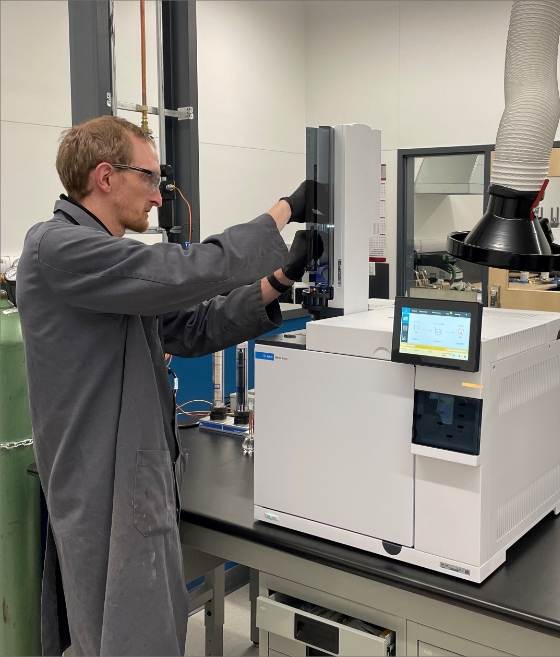
WVCO Chemist working on understanding molecular morphology of wax for engineering optimum product for the customers.
3Approach
We set out to invent the perfect
solution for the customer’s needs.
Starting with a control formula we began evaluating a variety of extender
materials and ration options. Leveraging our expertise with two-
component mixtures in polyurethane and dispensing of chemicals, we
refined the product through comprehensive testing, including:
Wax volatility testing
to evaluate product
flash point
Reactivity/stability testing
when mixed with pMDI
- – Quantify improved performance
- – Reductions in pMDI
Panel testing
- – Measure volatility reduction
- – Health & safety improvements
Emissions testing
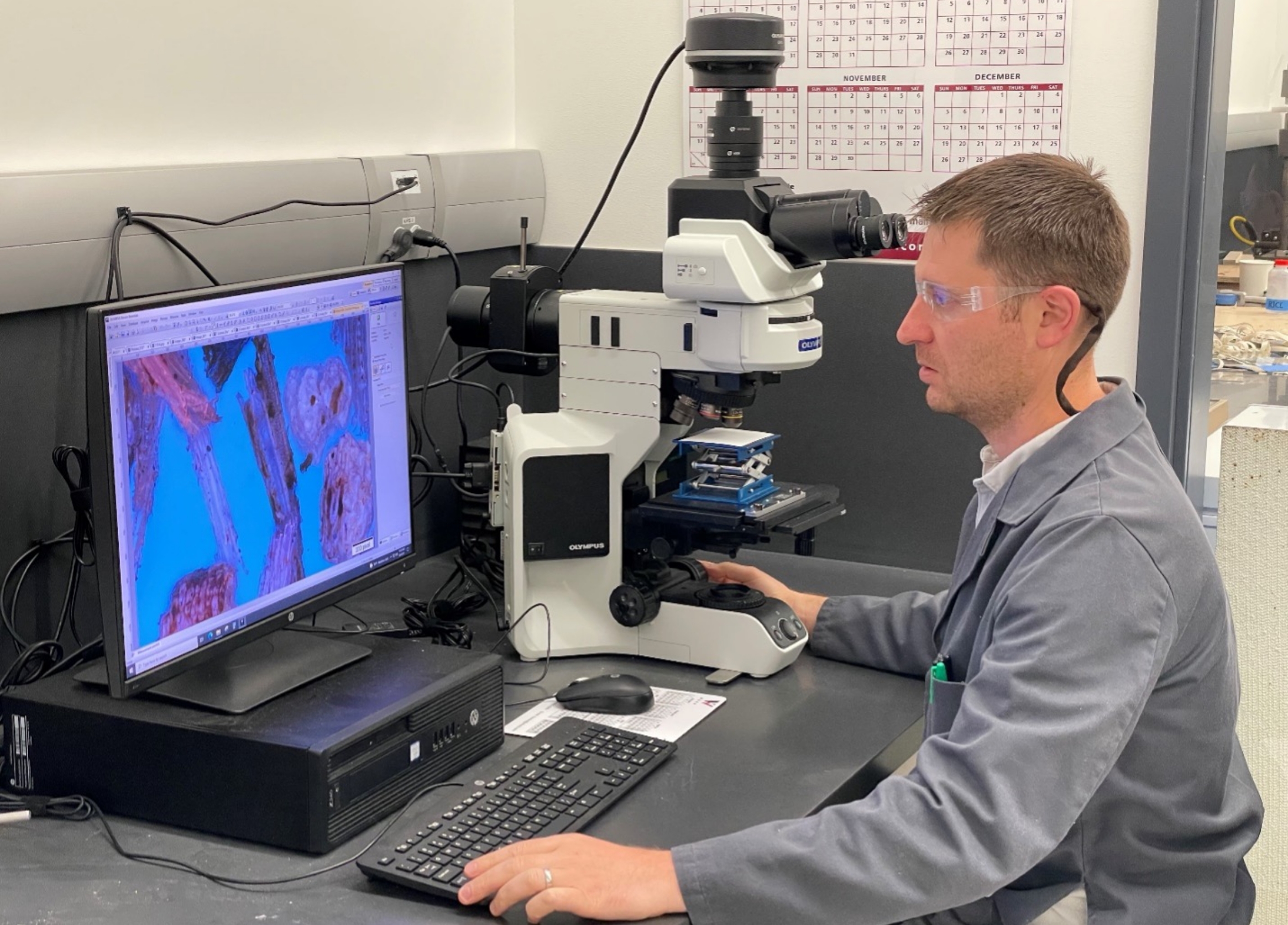
State-of-the-art microscopy to investigate wood-wax interaction and its impact on composite performance.
4Solution
We created a value-added wax emulsion that uses a bio-based extender to offset at least 20% wax based on non-renewable chemical feed stocks.
This innovative product represents a breakthrough for the
market — as a stand-alone product, the formula offers
increased benefits, but when mixed with a pMDI it offers an
additional suite of benefits.
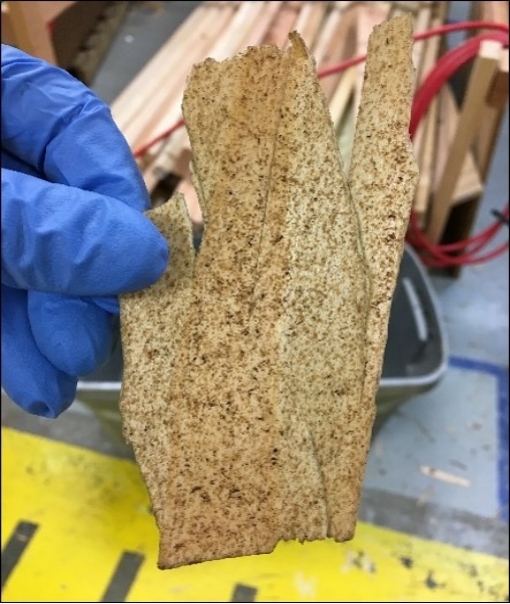
Superior pMDI and wax distribution on OSB flakes causing improved adhesion and moisture durability. The picture shows a representative OSB strand with pMDI-EW spray distribution.
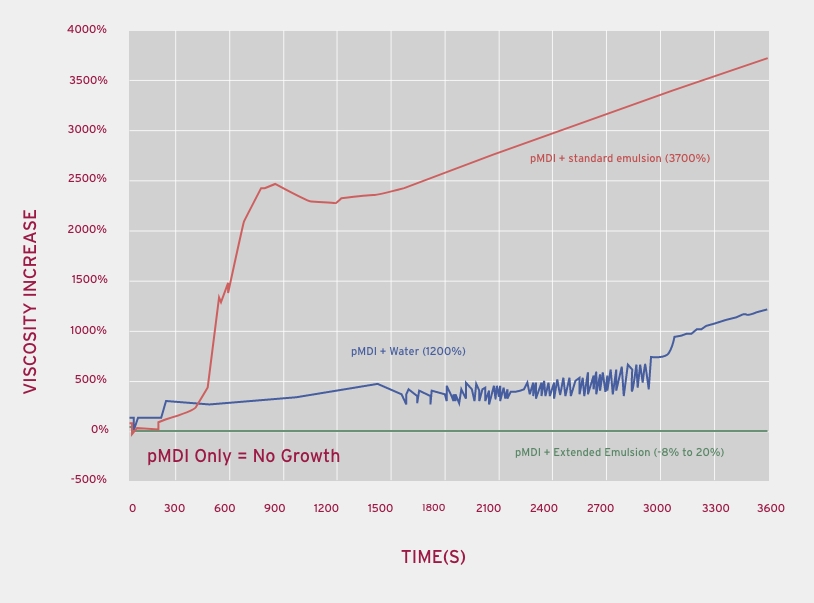
The extended wax is engineered to provide chemical stability when mixed with pMDI causing minimum or no pre-mature curing. Regular wax emulsion and water causes drastic pre-mature reaction with pMDI causing failure. The time-domain viscosity data shown above.
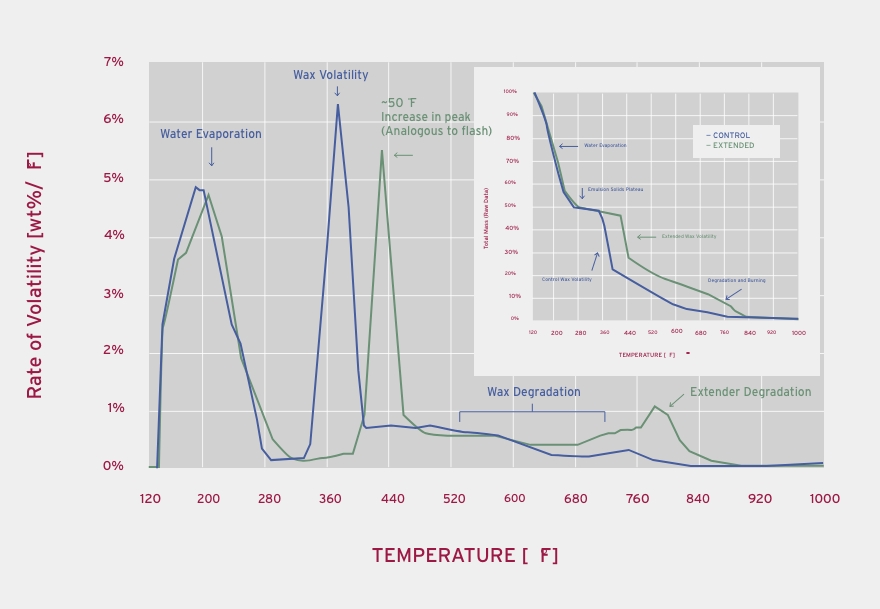
Thermogravimetric analysis (TGA) of regular and EW emulsion showing ~ 50 F rise in peak volatility. The EW emulsions has reduced volatility as compared to its parent wax emulsion, making it safer and better performing.
5Outcomes
Lower volatility / increased
flash point
- – Safer
- – Better performance
Improved product
performance
- – Moisture durability (wax and adhesive)
- – Mechanical performance (adhesive)
- – Better waxes can be used
- – Resin and wax savings afforded by increased performance
Ability to be co-applied with
pMDI resin
- – Improved distribution for wax and resin
- – Reduction in pMDI volatility (safety & maintenance)
More environmentally
friendly
- – 20% reduction in wax solids

Value-Added (Extended) Wax
HPRE
See how we created a solution that was electrically isolating, reduced noise and vibration…
VIEW NEXT INNOVATION